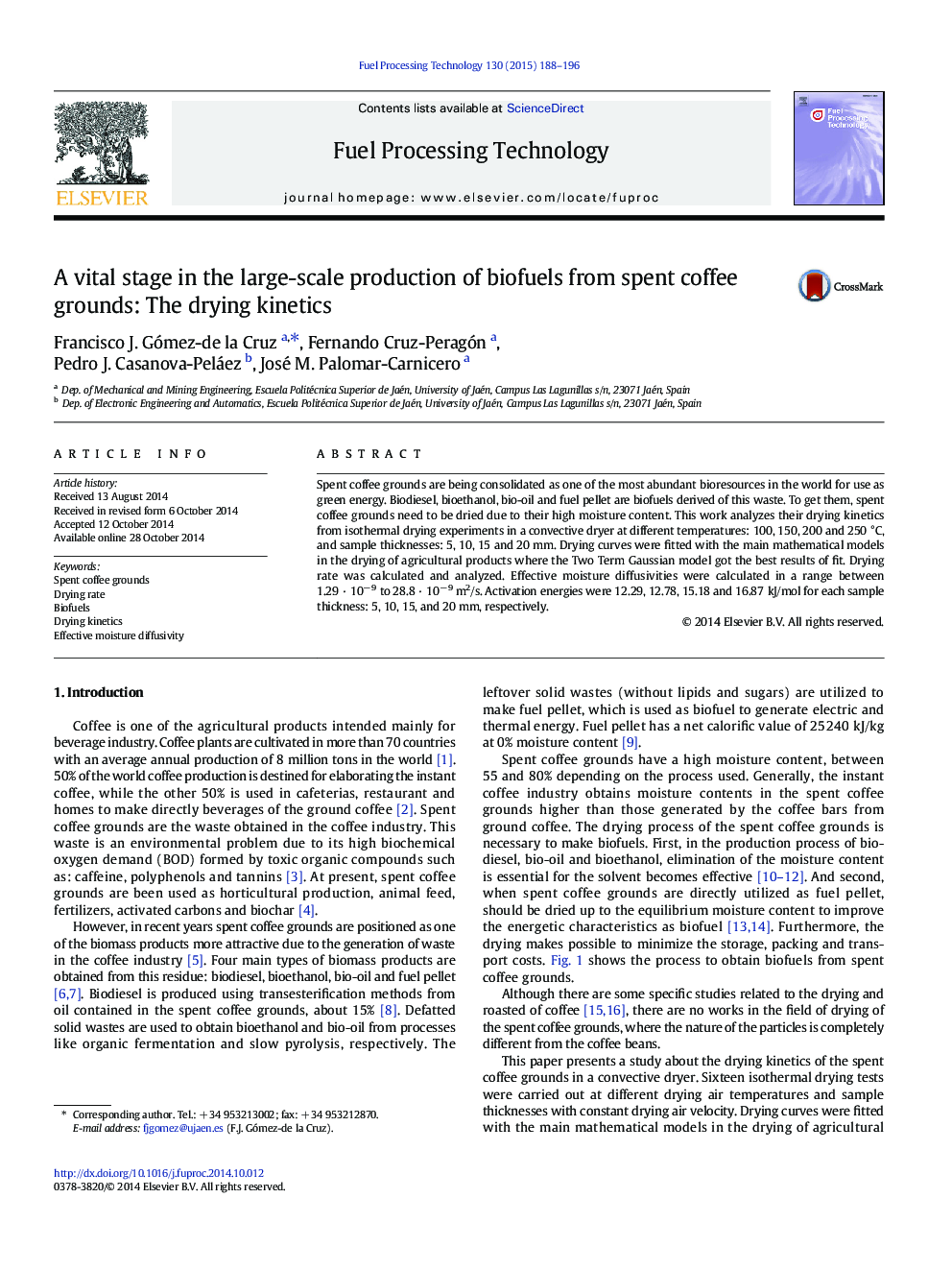| Article ID | Journal | Published Year | Pages | File Type |
|---|---|---|---|---|
| 209553 | Fuel Processing Technology | 2015 | 9 Pages |
•Drying is fundamental for the biofuel production from spent coffee grounds.•Drying rate is expressed as a function of temperature and moisture content.•Spent coffee ground samples start to burn at about 250 °C, volatile matter appears instants before.•Warming-up, first and second falling rates and shrinkage period are the drying stages.•The vast majority of the drying process occurs during the falling rate period.
Spent coffee grounds are being consolidated as one of the most abundant bioresources in the world for use as green energy. Biodiesel, bioethanol, bio-oil and fuel pellet are biofuels derived of this waste. To get them, spent coffee grounds need to be dried due to their high moisture content. This work analyzes their drying kinetics from isothermal drying experiments in a convective dryer at different temperatures: 100, 150, 200 and 250 °C, and sample thicknesses: 5, 10, 15 and 20 mm. Drying curves were fitted with the main mathematical models in the drying of agricultural products where the Two Term Gaussian model got the best results of fit. Drying rate was calculated and analyzed. Effective moisture diffusivities were calculated in a range between 1.29 · 10− 9 to 28.8 · 10− 9 m2/s. Activation energies were 12.29, 12.78, 15.18 and 16.87 kJ/mol for each sample thickness: 5, 10, 15, and 20 mm, respectively.
